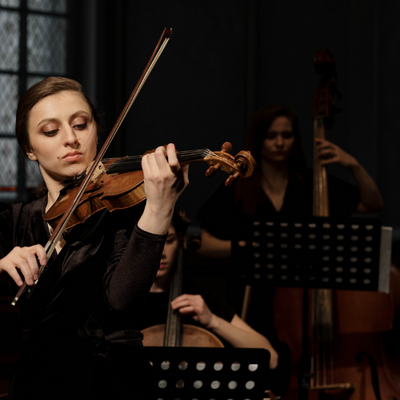
Introducing your child to the world of string instruments can be a wonderfully enriching experience. Whether they’re drawn to the bright tones of the violin or the deep resonance of the cello, finding the correct instrument size is essential to help them play comfortably and effectively. An instrument that’s too large or too small can make it challenging to achieve proper technique and sound, potentially leading to discomfort or frustration over time. Here, we’ll guide you through choosing the appropriate violin or cello size for your child, so they can fully enjoy learning and performing.
Understanding Violin and Cello Sizing

Unlike most other instruments, violins and cellos come in a range of sizes designed to suit various ages, heights, and arm lengths. This allows younger students to start learning at an early age with an instrument that’s tailored to their size. As they grow, their violin or cello size can be gradually increased to match their development, ensuring they always have an instrument that complements their build.
In the case of violins, sizes range from the smallest (1/32) up to a full-size (4/4) violin. Cellos follow a similar sizing concept, with sizes generally from 1/8 up to full-size, or 4/4. The challenge lies in identifying which size will be most comfortable and conducive to good technique for your child.
Choosing the Correct Violin Size for Your Child
When choosing a violin for a child, it’s best to consider both their age and their arm length. The most reliable way to find the right violin size is by measuring the child’s arm length from their neck to the centre of their palm. Here’s a general guide for children’s violin sizes based on age and arm length:

- 1/16 – typically for children ages 3-5, with arm lengths between 14 and 15 inches.
- 1/10 – for ages 4-5, suited to an arm length of around 15-16 inches.
- 1/8 – for ages 5-6, with an arm length of 16-18 inches.
- 1/4 – for ages 6-7, suited for an arm length of approximately 18-20 inches.
- 1/2 – for ages 7-9, with an arm length between 20-22 inches.
- 3/4 – for ages 9-11, suited for 22-23.5 inches.
- 4/4 (full size) – typically suited for children aged 12 and above, with an arm length over 23.5 inches.
However, bear in mind that each child is unique, and their growth patterns vary, so these guidelines can only provide an estimate. Trying a few sizes in-store is an ideal way to ensure the best fit. We offer a wide variety of beginner-friendly violins, perfect for your child’s first instrument.
Selecting the Right Cello Size for Your Child
Choosing the best cello size for children also relies on age and height, though the measurement is taken slightly differently than for violins. For cellos, you’ll measure the child’s height and consider their reach to ensure the instrument is manageable. Below is a general sizing guide for cellos based on age and height:

- 1/8 – for young beginners, typically aged 4-6 years and approximately 90-105 cm tall.
- 1/4 – suited for children aged 5-7 years, around 100-115 cm in height.
- 1/2 – appropriate for ages 7-11, with a height between 115-135 cm.
- 3/4 – generally fits children aged 11-15 years, around 135-150 cm tall.
- 4/4 (full size) – suitable for older teens and adults, typically those over 150 cm.
Trying the cello in-store is essential for a good fit. Your child should be able to comfortably reach the fingerboard while sitting in a relaxed position with their knees slightly bent. If they struggle to hold the cello, this might indicate that a smaller size is better suited to them. Our range of beginner cellos is perfect for introducing your child to the joy of playing music.
Trying Before Buying: Why It Matters

When selecting a violin or cello, trying the instrument in person offers valuable insights into its suitability for your child. The instrument should feel comfortable to hold and play, enabling them to achieve proper posture and technique. Trying an instrument also allows them to feel more connected to it, as they get a sense of the sounds they can produce.
In addition, children may have their own preferences for certain sizes or models, and involving them in this decision can help build their enthusiasm for playing. Most music stores, including ours, have a range of sizes available for trying, so we recommend taking the time to let your child experiment before committing to a purchase.
Final Thoughts
The right-sized instrument is not only a key factor in helping your child develop their musical skills but also an investment in their comfort and enjoyment. Choosing the appropriate violin or cello size will allow them to focus on playing rather than struggling with an ill-fitting instrument, enabling their confidence and skill to grow steadily. With these tips on choosing a violin or cello, your child is ready to embark on an exciting musical journey.





















